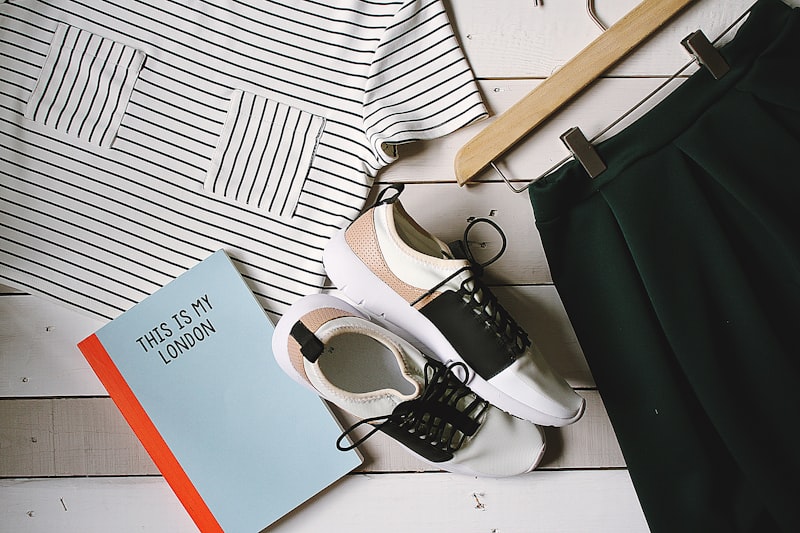Imagine stepping into a virtual world where fashion shows unfold before your eyes in stunning detail. Virtual reality (VR) has enabled designers to showcase their collections in immersive environments, transcending geographical boundaries and inviting global audiences to experience fashion like never before. This technology not only enhances accessibility but also sparks creativity by offering limitless possibilities for presentation.
Moreover, artificial intelligence (AI) has become a game-changer in predicting fashion trends. By analyzing vast amounts of data from social media, runway images, and consumer behavior, AI algorithms can forecast upcoming trends with remarkable accuracy. This capability empowers designers and brands to anticipate demand, streamline production, and deliver what consumers want faster than ever.
The retail experience has also undergone a digital makeover, thanks to technologies like augmented reality (AR) and 3D printing. AR allows shoppers to virtually try on clothing and accessories from the comfort of their homes, bridging the gap between online browsing and in-store try-ons. On the other hand, 3D printing has opened new frontiers in fashion design, enabling the creation of intricate garments and accessories that were once unimaginable.
Beyond the runway and retail, sustainability has emerged as a critical focus in the fashion-tech revolution. Innovations in fabric technology and production methods are reducing the industry’s environmental footprint. From biodegradable textiles to upcycled materials, technology is paving the way for a more sustainable and ethical fashion ecosystem.
Virtual Runways and Digital Couture: Technology’s Impact on Fashion Shows
In recent years, technology has seamlessly integrated into the fabric of fashion shows, offering designers a virtual canvas to showcase their collections. This evolution has democratized access to fashion, allowing enthusiasts from every corner of the globe to experience runway magic without geographical constraints. No longer are fashion shows exclusive events for the elite; they’ve become global spectacles accessible with just a click.
Digital couture takes this accessibility a step further by blurring the lines between physical and virtual realities. Designers can now create stunning, lifelike garments using advanced 3D modeling and simulation technologies. These digital creations, often intricately detailed and breathtakingly beautiful, are not constrained by the limits of physical materials or production timelines. They exist in a realm where imagination meets technical prowess, opening up endless possibilities for avant-garde designs and sustainable fashion practices.
Moreover, virtual runways have transformed the way audiences engage with fashion. Viewers can immerse themselves in interactive experiences that go beyond mere observation. Imagine virtually attending a fashion show where you can zoom in on the fabric of a dress, explore its intricate embroidery, or even visualize how it would look on you—all from the comfort of your home.
This digital shift isn’t just about convenience; it’s about pushing boundaries and redefining creativity. Designers are empowered to experiment with new forms, textures, and visual effects that challenge traditional notions of fashion presentation. It’s a playground where technology meets artistry, where every pixel and polygon tells a story of innovation and vision.
As we embrace this digital future of fashion shows, one thing is clear: the runway is no longer confined to a physical space but extends into the limitless realms of virtual possibility. Whether you’re a designer pushing the boundaries of creativity or an enthusiast exploring the latest trends, virtual runways and digital couture promise an exhilarating journey into the future of fashion.
From AI Designers to 3D Printing: Innovations Redefining Fashion Creation
Artificial intelligence, or AI, has stepped boldly into the realm of fashion design, bringing with it a blend of creativity and data-driven precision. These AI designers can sift through vast amounts of fashion data, from runway trends to social media chatter, to discern patterns and forecast what styles will resonate next season. By learning from historical trends and current influences, AI designers assist human creators in generating fresh, innovative designs that captivate the market.
Moreover, the advent of 3D printing has added another layer of innovation to fashion creation. This technology allows designers to materialize their visions with unprecedented speed and customization. Imagine being able to print intricate patterns and textures directly onto fabric or even create entire garments layer by layer, all with the precision and detail that traditional manufacturing methods struggle to match. 3D printing not only accelerates the production process but also reduces waste by only using materials as needed, aligning with the growing demand for sustainable fashion practices.
Together, AI designers and 3D printing are redefining what it means to create fashion. They represent a fusion of artistry and technological prowess, where creativity knows no bounds and the impossible becomes achievable. As these innovations continue to evolve, they promise to democratize fashion creation, making it more accessible and responsive to individual tastes than ever before.
In this era of AI and 3D printing, the future of fashion creation is bright with possibilities. Whether it’s designing personalized clothing based on individual preferences or pushing the boundaries of avant-garde fashion, these technologies are reshaping an industry that thrives on innovation and creativity. Embrace the future of fashion, where imagination meets technology in every stitch and pattern.
Smart Fabrics and Wearable Tech: The Future of Functional Fashion
Smart fabrics are revolutionizing the way we think about clothing. These fabrics are embedded with technology that can monitor biometric data, adjust to temperature changes, or even communicate with other devices. It’s like having a personal assistant woven right into your shirt or dress.
One of the most exciting aspects of smart fabrics is their ability to improve health and wellness. Imagine wearing a shirt that tracks your heart rate and hydration levels during a workout, or socks that analyze your running gait to help prevent injuries. These innovations aren’t just convenient—they have the potential to revolutionize healthcare by providing real-time data that can be used for diagnosis and treatment.
But it’s not just about health. Smart fabrics also promise to enhance our daily lives in countless ways. From jackets that heat up at the touch of a button to dresses that change color with your mood, these fabrics are pushing the boundaries of what fashion can do.
Wearable tech goes hand in hand with smart fabrics, taking innovation to the next level. Devices like smartwatches and fitness trackers are already mainstream, but imagine if that technology was seamlessly integrated into your clothing. No more bulky gadgets or awkward accessories—just sleek, functional fashion that keeps you connected and informed.
The future of functional fashion is here, and it’s more exciting than ever. As technology continues to evolve, so too will our clothes, becoming smarter, more intuitive, and more integrated into our daily lives. Whether you’re a fitness enthusiast, a tech geek, or just someone who appreciates stylish innovation, smart fabrics and wearable tech offer something for everyone. So, why settle for ordinary when you can wear the future?
E-Commerce Revolution: How Online Platforms Are Shaping Fashion Retail
Imagine a bustling marketplace where the entire globe is your shopping mall. That’s the power e-commerce platforms like Amazon, eBay, and fashion-specific sites wield. They’ve turned the traditional brick-and-mortar store model on its head, offering consumers unparalleled convenience and choice right at their fingertips. Whether you’re hunting for haute couture or everyday essentials, these platforms deliver, literally.
One of the most captivating aspects of online fashion retail is the sheer variety available. No longer bound by geographic limitations, shoppers can explore a universe of styles, trends, and brands from across the world. Want a Parisian-chic blouse or Tokyo streetwear? It’s just a click away. This vast selection not only caters to diverse tastes but also encourages experimentation and individuality in personal style.

Moreover, e-commerce platforms have democratized fashion in a way never seen before. Gone are the days when only the elite could access high-end designer labels. Today, emerging designers and independent brands can showcase their creations alongside established names. This inclusivity has fostered a vibrant community where creativity flourishes and fashion boundaries are constantly pushed.
But it’s not just about what’s on offer; it’s also about how these platforms engage with consumers. Through personalized recommendations, AI-powered styling tools, and interactive content, online retailers create a tailored shopping experience that feels like a personal stylist guiding you through the trends. It’s like having a fashion-savvy friend who always knows what suits you best.
Of course, the convenience factor cannot be overstated. Busy schedules no longer pose a barrier to fashion indulgence. Need a last-minute outfit for a special occasion? No problem. With same-day delivery and easy return policies, online shopping has made spontaneity effortless.
Augmented Reality Mirrors: Trying on Tomorrow’s Fashion Today
AR mirrors merge the virtual and physical realms seamlessly. They allow you to see how different outfits would look on you without actually having to change clothes. It’s like having a personal stylist and a magic mirror rolled into one. With a simple gesture or touch, you can switch between styles, colors, and sizes, exploring endless possibilities without the hassle of trying on multiple garments.
These mirrors aren’t just about convenience; they’re about creating an experience. Picture yourself in a boutique, admiring a dress on display. Instead of heading to the fitting room, you can stand in front of an AR mirror and instantly see how that dress would fit and flow on your body. The mirror adjusts in real-time as you move, giving you a 360-degree view and ensuring that what you see is exactly what you would get.
For fashion retailers, AR mirrors represent a game-changing technology. They enhance the shopping experience, making it more engaging and personalized. By allowing customers to virtually “try on” items, these mirrors reduce the uncertainty of online shopping and increase the likelihood of making a purchase. It’s like bringing the fitting room to the sales floor, creating a dynamic environment where shoppers can interact with products in innovative ways.
Moreover, AR mirrors cater to the digital-savvy generation, who value both convenience and novelty. They provide a bridge between the tactile experience of traditional shopping and the digital innovations shaping the future. With AR mirrors, shopping becomes not just a transaction, but an exploration of possibilities—an opportunity to experiment with styles and express oneself through fashion in new and exciting ways.
Sustainability Tech in Fashion: Can Innovation Save the Planet?

In today’s fast-paced world, where fashion trends evolve as quickly as social media feeds refresh, there’s a growing awareness about the environmental impact of our clothing choices. Enter sustainability tech—a revolutionary field that aims to marry cutting-edge innovation with eco-friendly practices in the fashion industry.
Picture this: you’re wearing a stylish outfit that not only looks good but also contributes to a healthier planet. That’s the promise of sustainability tech. From recycled fabrics to biodegradable materials, the industry is buzzing with new ideas aimed at reducing carbon footprints and waste. Innovators are rethinking every step of the fashion supply chain, from design and production to distribution and disposal.
But how exactly does sustainability tech work its magic? Imagine fabrics made from discarded ocean plastics or agricultural waste. These materials are not only durable and versatile but also significantly reduce the reliance on virgin resources. Brands are increasingly turning to these alternatives, not just out of altruism but also because consumers are demanding greener choices.
The impact goes beyond materials. Advanced technologies like 3D printing are revolutionizing how garments are made, allowing for precise customization and minimizing textile waste. Meanwhile, blockchain is enhancing transparency in supply chains, ensuring that products are ethically sourced and produced.
It’s not just about the clothes; it’s about the entire lifecycle. Can you envision a future where your favorite sweater doesn’t end up in a landfill but decomposes naturally? Sustainability tech is making this vision a reality with biodegradable textiles that break down without harming the environment.
Blockchain in Fashion: Transparency and Trust in Supply Chains
Imagine a world where every piece of clothing you buy tells its own unique story from raw material to finished product. That’s the promise of blockchain technology in the fashion industry—bringing transparency and trust to supply chains like never before.
In essence, blockchain serves as a digital ledger that records every transaction or interaction in a secure, transparent, and immutable way. For fashion brands, this means being able to trace the journey of a garment from the cotton fields or synthetic fibers to the factory, and finally to the store or the customer’s doorstep. Each step is recorded as a block that links seamlessly to the next, creating an unbroken chain of information.
But why is this such a game-changer? Think about it this way: traditionally, supply chains in fashion have been complex and often opaque. Consumers are increasingly curious about where their clothes come from and how they’re made. Blockchain addresses these concerns by providing a clear view into every process involved. It ensures that claims of sustainability, fair trade practices, and ethical sourcing can be verified with hard data rather than just marketing slogans.
For instance, a shopper browsing for a new sweater can scan a QR code on the label and instantly see which farm the wool came from, which factory spun the yarn, and even which artisans stitched the final piece. This level of detail not only builds trust but also empowers consumers to make informed choices aligned with their values.
Moreover, blockchain enhances security by safeguarding data against tampering or fraud. Each entry is time-stamped and encrypted, making it virtually impossible to alter retroactively. This feature is crucial in combating counterfeit products—a rampant issue in the fashion industry—which not only deceive consumers but also undermine brand integrity.
As blockchain continues to evolve, its potential in fashion extends beyond transparency. It could revolutionize inventory management, streamline payments across international borders, and even enable new business models like renting clothes through smart contracts.
Frequently Asked Questions
What are the ethical implications of technology in fashion
Explore the ethical implications of technology in fashion, examining issues such as sustainability, labor practices, and consumer transparency. Learn how advancements in technology impact the environment, worker welfare, and ethical consumer choices.
How is AI influencing the design and production of clothing
Discover how AI is transforming clothing design and production with innovative technologies that streamline pattern generation, enhance material selection, optimize manufacturing processes, and personalize consumer experiences.
What role does virtual reality play in fashion retail
Discover how virtual reality enhances the fashion retail experience by allowing customers to virtually try on clothes, explore virtual stores from anywhere, and personalize their shopping journey through immersive technology.
How are wearable technologies impacting the fashion market
Discover how wearable technologies are influencing the fashion market, exploring their integration with clothing and accessories to enhance functionality and style. Learn about the latest trends and innovations reshaping consumer expectations and brand offerings.
What are the key ways technology is changing fashion
Discover how technology is transforming fashion through innovative design processes, sustainable materials, personalized shopping experiences, and virtual fashion shows.


